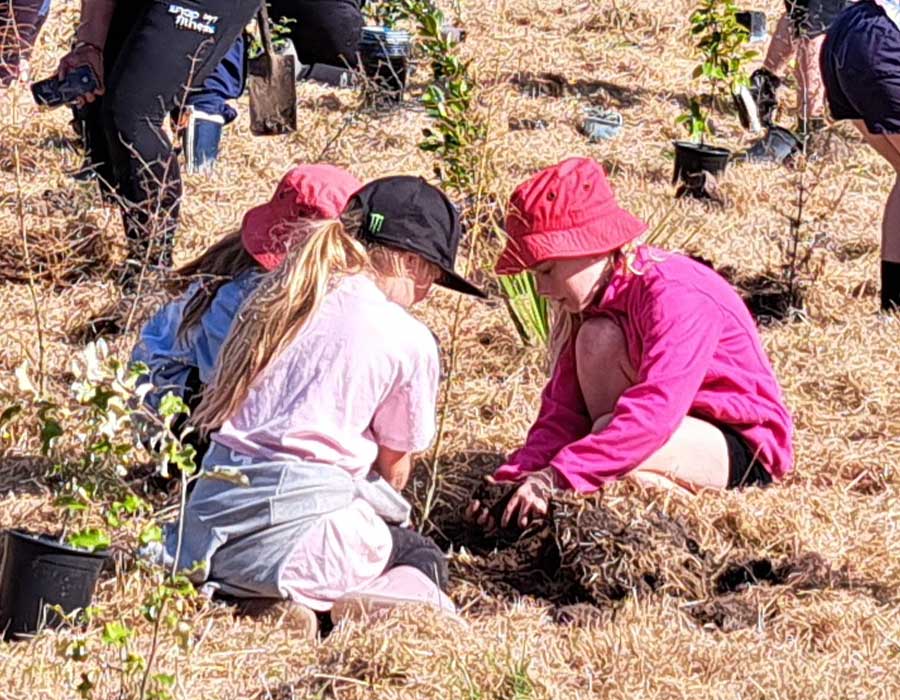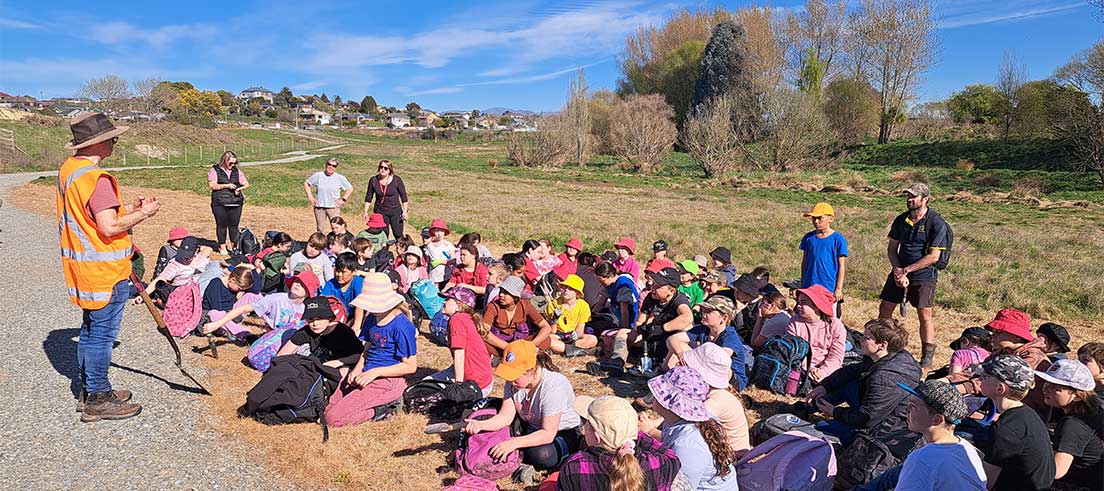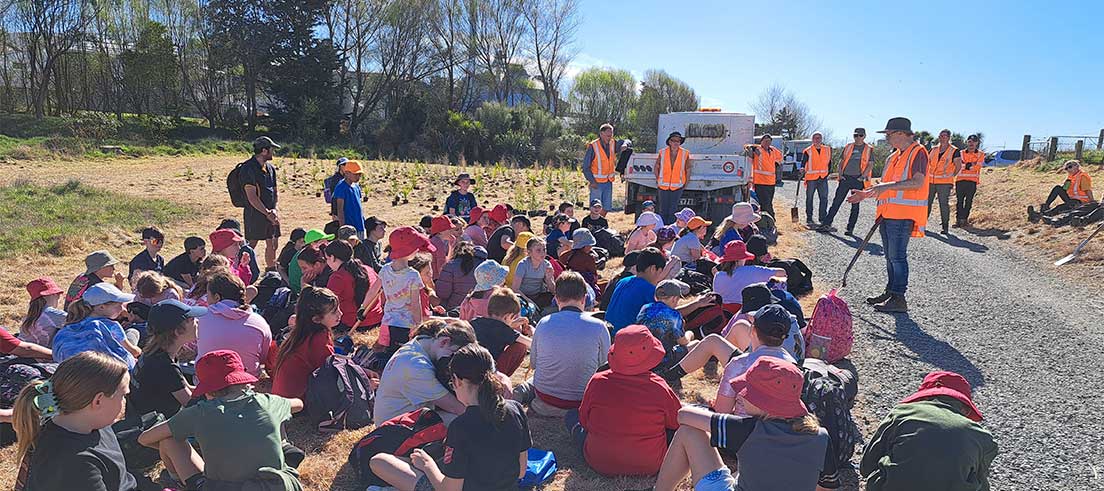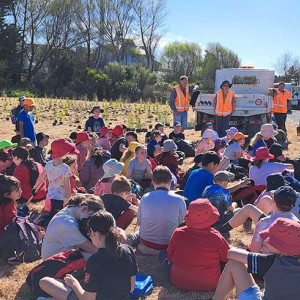
Where there’s life, there’s hope – Planting for a clean stream
Grantlea Downs School students want Te Ahi Tarakihi to become a clean stream again.
For the last 17 years, students at the school have been monitoring the health of this waterway and advocating for action to improve water quality.
Threats to Te Ahi Tarakihi
An earlier group of students began the project by identifying the biggest problems affecting water quality in the stream.
They discovered negative impacts from:
- Noxious weeds
- Livestock in the water
- Gravel
- Rubbish
- Algae and sediment
- Contaminants from a stormwater drain outfall
- Erosion
As a result of their investigations, the students campaigned for fencing to exclude livestock from the waterway.
Planting a sustainable future
Building on the work of the students before them, Grantlea Downs' current year 4-6 students now want to tackle some of the other issues affecting the mauri of the stream, such as contaminants and sediment.
That’s why last week, with the support of their teachers and parents, they helped the Ōrāri Temuka Ōpihi Pareora Water Zone Committee (OTOP), Environment Canterbury and Timaru District Council put 1000 native plants in the ground.
These plants will help to form a wetland that will capture and filter contaminants and sediment before they enter the stream and the coastal environment. This will benefit the whole ecosystem, attracting healthy insect life and providing food and a healthy habitat for inanga/whitebait.
Grantlea Downs students knew the mauri of the stream was degraded because past students had conducted an insect survey comparing it to the nearby Taumatakahu/Temuka Stream. They found almost no insects in their stream inspection compared to reasonably diverse insect life in Taumatakahu.
A vital effort for inanga and ecosystem health
"It’s brilliant to see this area planted because it’s a very important spawning ground for inanga. It’s the only urban Timaru stream permanently open and not impeded by drains or culverts," said Rosemary Clucas, Land Management and Biodiversity Advisor at Environment Canterbury.
"These plants will be a great help to this species and crucially, improve the quality of the water being discharged into the Te Ahi Tarakihi Mataitai (a protected mahinga kai gathering area). Without wetlands, contaminants flow out uninterrupted into the bay accumulating in shellfish and harming fish and birdlife."
The area chosen is next to a nesting area for spoonbills and shags who are right now preparing their nests for the breeding season. It's also a public reserve so besides its ecological function, it’s an important amenity space for people in the area.
Everyone working together for the best results
The plants were funded by the OTOP Water Zone Committee and chosen by Arowhenua Rūnaka to complement the coastal wetland. Timaru District Council dug the holes for the students to prepare the way and ensure the plants were in the right spots to thrive.
"It’s so encouraging to see the students at this school continue their mahi to restore the mana of this stream," said Debbie Eddington, youth engagement and education advisor.
"Students were so enthusiastic they continued digging their own holes after filling up all of the pre-prepared ones."
The young kaitiaki from Grantlea Downs School, OTOP Water Zone Committee and Timaru District Council will continue to work together to improve the mauri of this stream and plan further planting and remediation work in the coming months.





